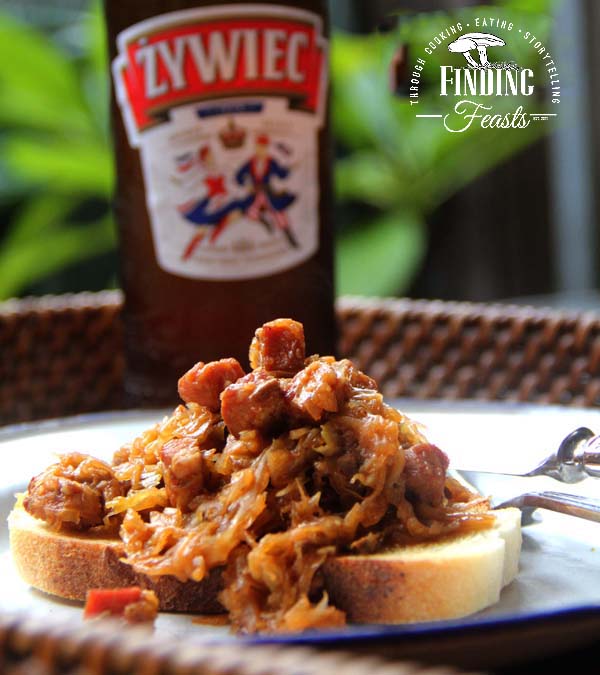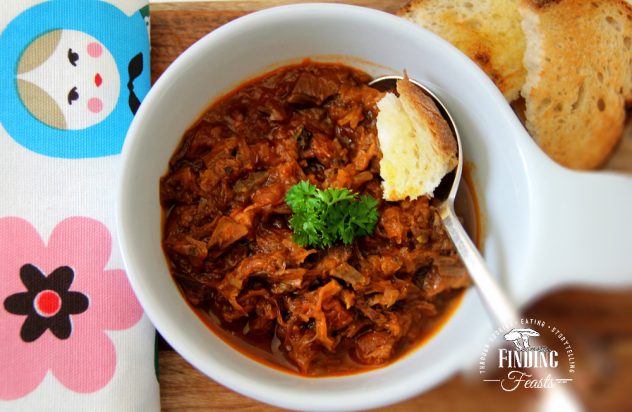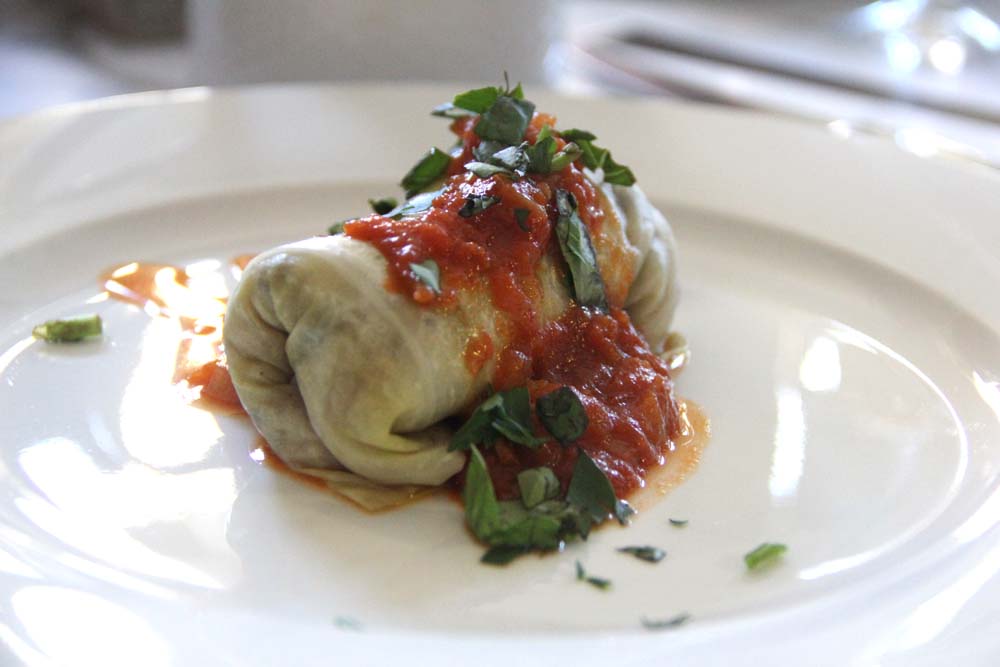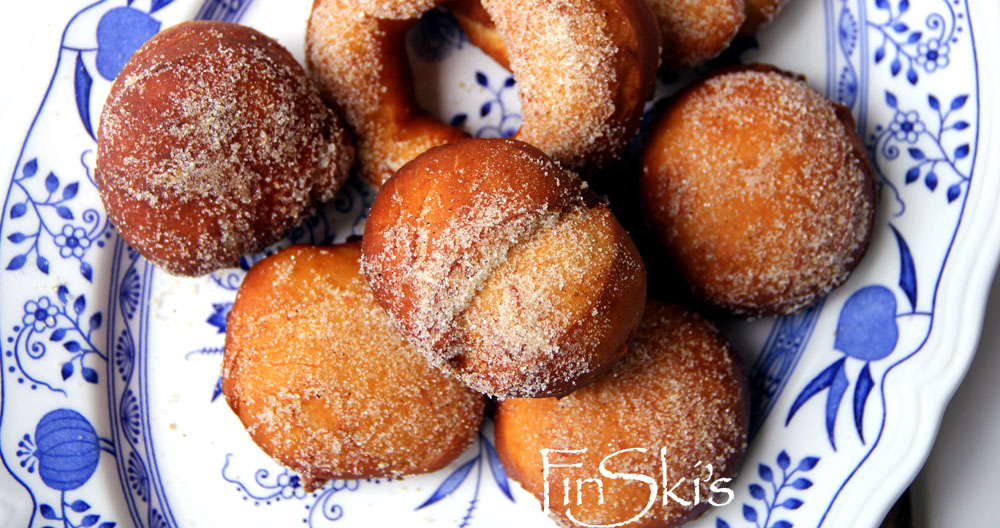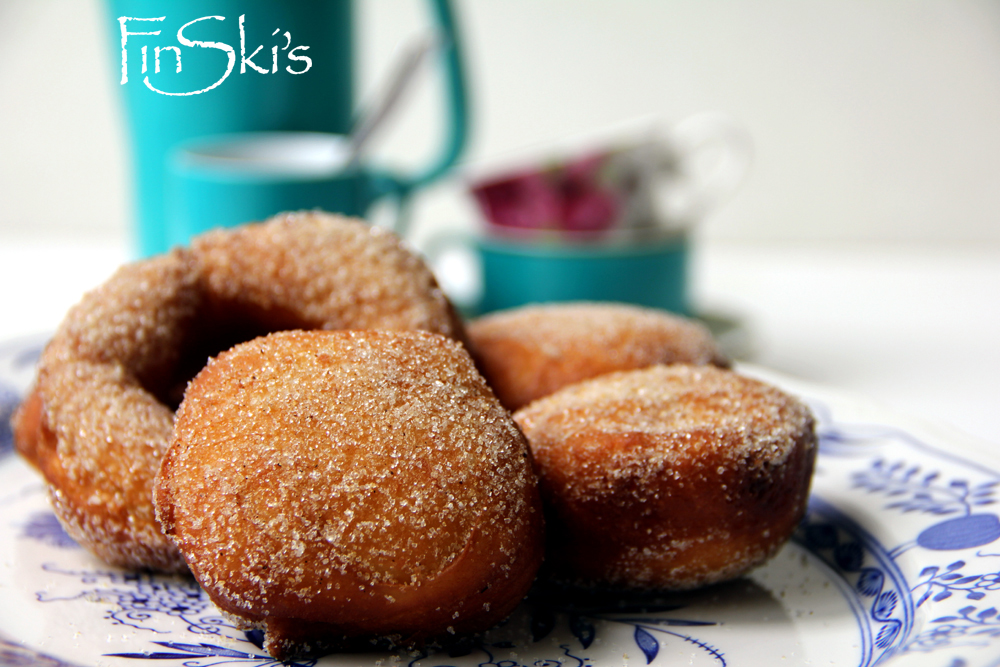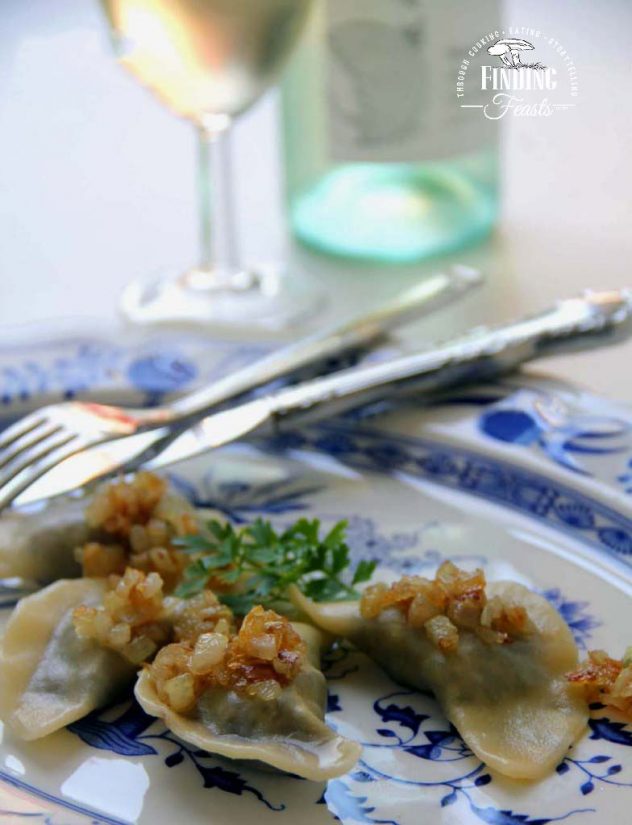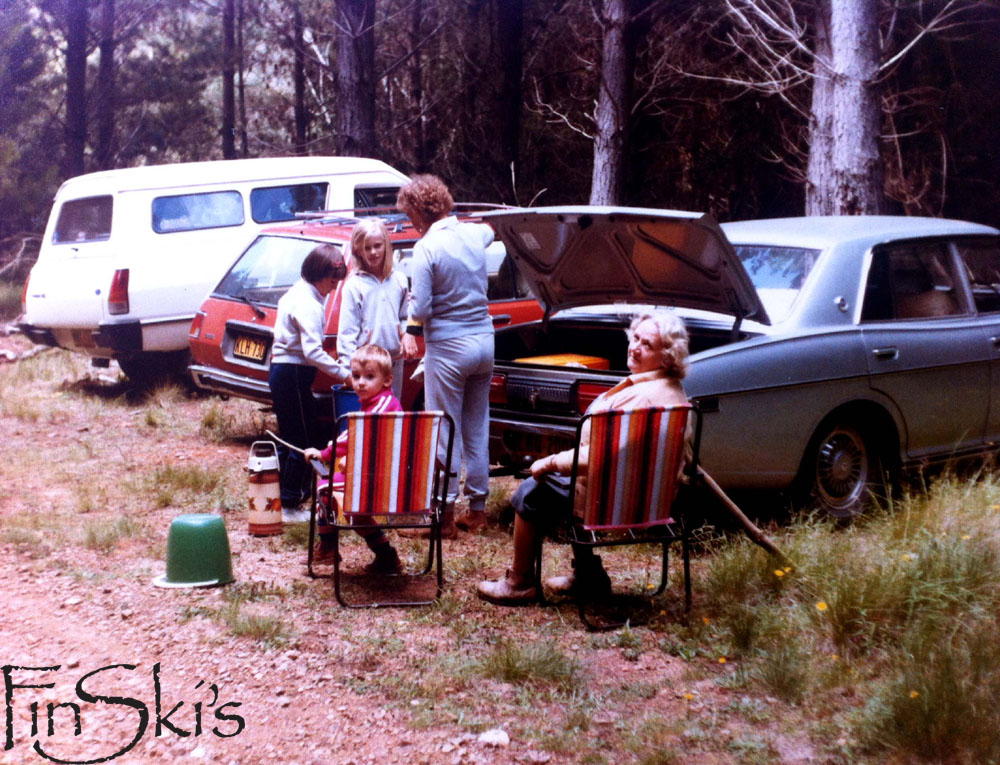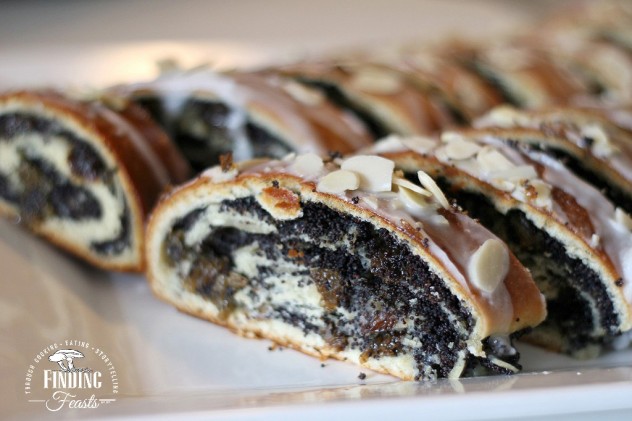Bigos or Hunter’s Stew… I am not afraid of letting the world know that I would love to go on one of those cooking shows and wow the judging panel with the national dish of Poland! What frightens the heck out of me is presenting this dish on a plate!I can see the comments now…”Bella you have created a warm and hearty stew, full of flavour and intensity, however what has really let you down is your presentation”.
The Italian’s have Pasta, the English have Fish & Chips (as I have just recently learned from Blondie!) the Hungarian’s have Goulash and the Poles have, Hunter’s Stew a.k.a Bigos.
Let’s face it, this isn’t the most appealing dish to photograph. I have countless hours this week surfing the net for presentation ideas to ensure that it does not look like slop on a plate, however where presentation fails somewhat, taste sensation sets in! And let me tell you that this dish will warm the heart on a cold winter’s day!
Bigos has been eaten by the Poles for many centuries, it is approximately 700 years old. When speaking to dad about its meaning he said the word bigos signified a combination or mixture of ingredients similar to a mess… success! I have created a mess.
As a child I have fond memories of family gatherings where bigos was one of the feature dishes. I would eagerly await for my bowl and dip mum’s rye bread into the rich and flavoursome sauce.
Whilst there are basic components like sauerkraut, onion, mushrooms and meat, there is no right way of making bigos and you will see that it varies from family to family. My mum’s bigos has evolved over the last 30 years from adding tomato paste to not adding it, from making it a runny stew to making it a dry stew and the changes go on.
When I got mum’s new recipe I thought to myself…I will just make enough for the blog / photos… mission impossible! The dish is best made to a large consistency, after all it taste so much better with time. Yes you can eat it within 3 hours of cooking it however the taste develops as it stands. I would normally give it 1-2 days, although it never lasts that long!

My tips for making this dish:
1) use good quality sauerkraut and to me nothing beats Krakus Sauerkraut! I tried making my own a few months back – failed miserably but that is a story for another day!
2) don’t over liquid the cooking process. Remember that this is a dry stew so its not meant to be covered in water.
3) best eaten on the 2nd day!
4) eat it over rye or sourdough bread with a bottle of Zywiec!
Smacznego!
Smacznego! Bella

